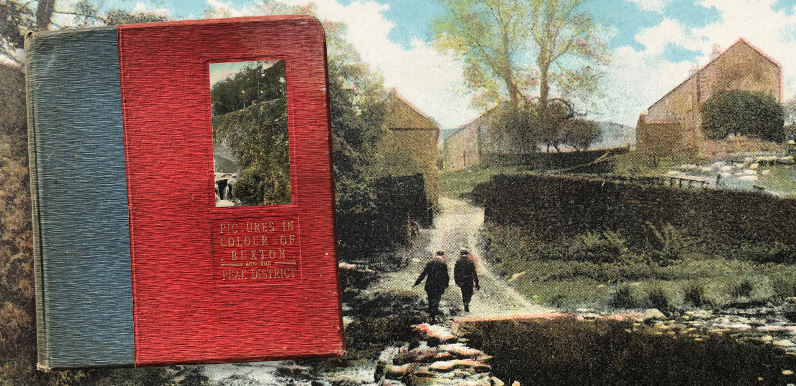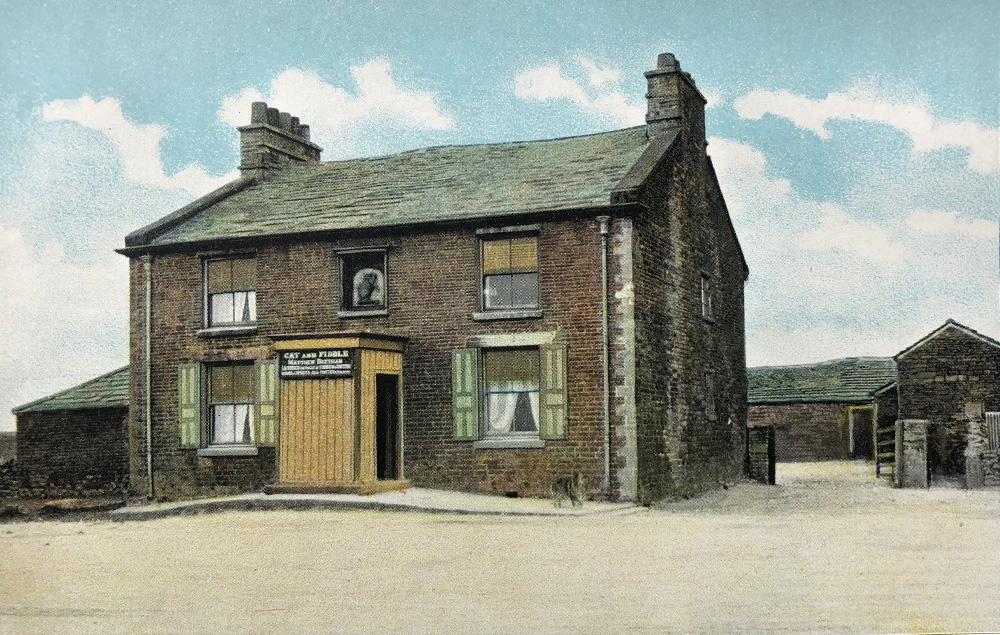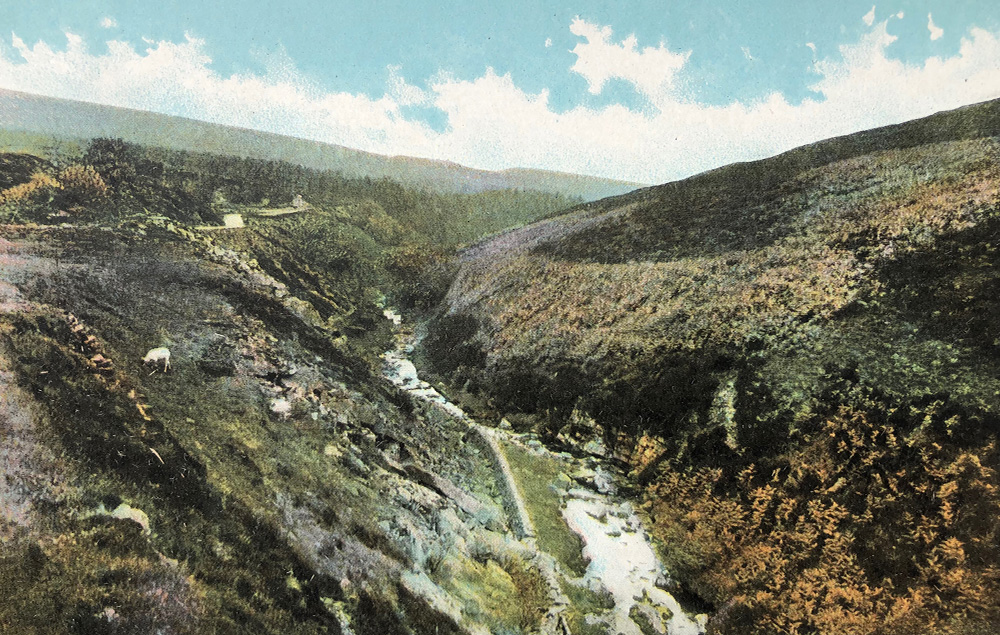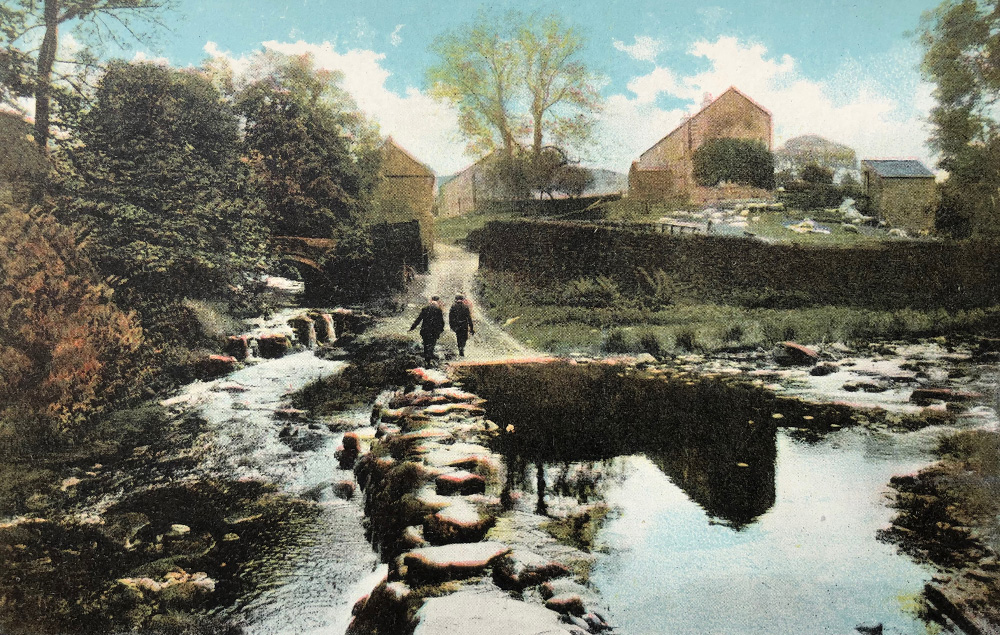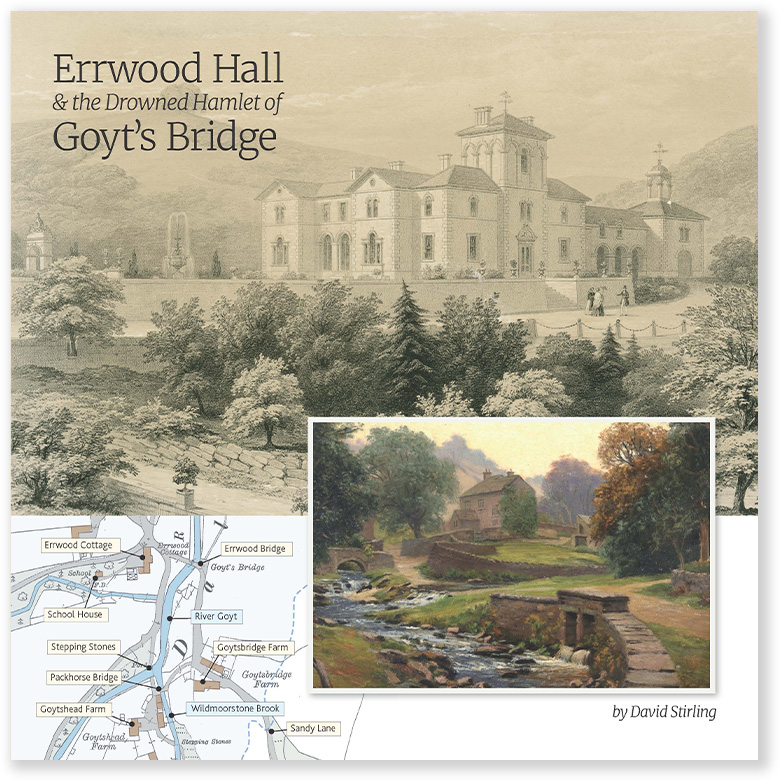Above: The caption under the photo of Goyts Bridge mentions a ‘very pretty old mill’. I don’t think there was a mill in Goyt’s Bridge, so it must have been the one at Goytsbridge.
This closed in 1890, so it must have been derelict at the time. It’s a great pity that the book didn’t contain a photo of the mill ruins.
I recently came across a wonderful book, which must have been published in the early 1900s, called ‘Pictures in Colour of Buxton and the Peak District’.
There must be well over 100 colour plates, including the three below taken around the Goyt Valley. I’ve copied the captions exactly as they appear. Simply click on any image to enlarge.
The celebrated inn, some 1,690 feet above the sea, is situated on the second highest point of Axe Edge, on the road between Macclesfield and Buxton, from which town it is some five miles distant.
It claims to be the second highest licensed house in the kingdom, and commands a very fine and extensive view over the surrounding country. On a clear day it is averred that the Wrekin in Shropshire can be distinguished from here.
Buxton is a very good centre for expeditions into the surrounding country, and one of the prettiest is a visit to the Goyt Valley. Following the ‘Cat and Fiddle’ road for some three miles, the visitor will find a rough road turning down the hill the right. Following this for a short distance, he comes to a cleft or valley between two ranges of hills with a river running below.
Pursuing his way over a rough track for some four miles, he is rewarded by a succession of beautiful peeps and views, sometimes almost on the river’s lip, sometimes a hundred feet above, the track well shaded by lovely trees, and the opposite bank a gorgeous mass of colour from the gorse heather and bracken growing thereon.
Continuing on this downward track, the visitor comes upon a very pretty old mill and quaint old bridge, known as Goyt’s Mill and Bridge. Across this latter there is an old rough road or track which leads to the Manchester Road, some two-and-a-half miles above Buxton.
Goyt’s Bridge is thus described by Bradbury: “A grey stone arch, spanning a trickly tributary of the Goyt. There is an old cottage, with an interior like a bit of Teniers, together with a picturesque blending of swift water, projecting rock, and hanging tree, that might be a scene, specially ‘set’ by Nature for a stage picture.”
